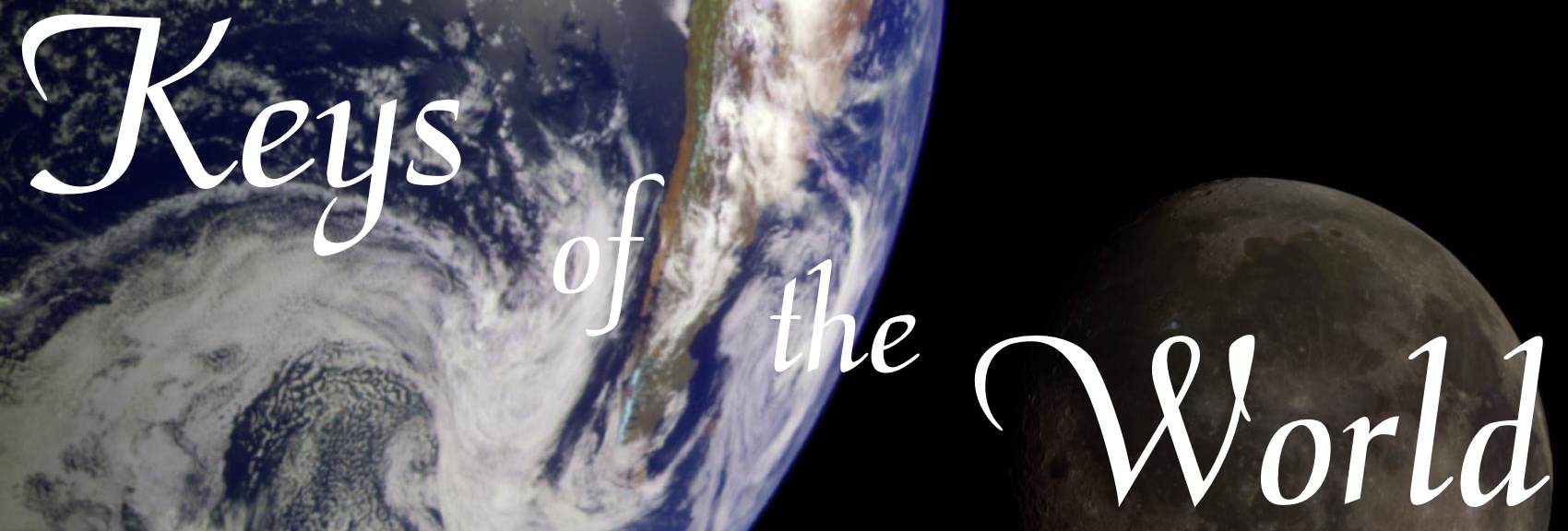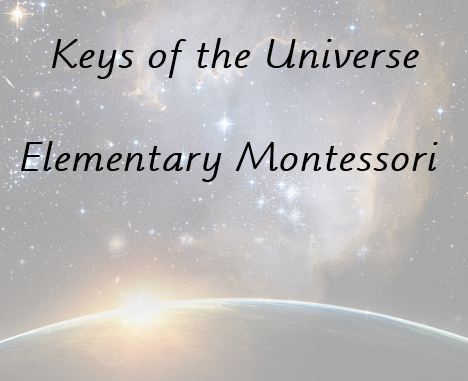
I'd like to speak on a business-related topic, but as a mom/teacher/catechist/homeschool-mom - not necessarily in that order!
What is the story behind Keys of the Universe and Keys of the World? In a nutshell.....
Keys of the World albums are my AMI primary albums, with very minor modifications; they cover ages 2 1/2-6. Eventually, I would like to fine-tune these albums more specifically for homeschool purposes, but for now, they are pretty much what I created in my AMI Montessori training and are still quite useful for homeschooling purposes. I LOVED this training!
 Keys of the Universe
Keys of the Universe albums are my AMI elementary albums; they cover ages 6-12; I created 75% of the current content during training, with the remaining AMI portions filled in afterward. I offer online support for these albums and am currently revamping the certificate of completion requirements for those folks needing certificate. The certificate is not required; and the assignments are only required if you want the certificate (or for your own personal use). The albums themselves are available with or without the certificate.
There are portions that are NOT AMI contributions, but are my own creations specifically to smooth out the album pages or sections in areas where, frankly,
AMI is a bit out of touch with reality. For example, one major section I am adding is a separate album just for Astronomy. It will be a thin album, designed to provide the basics and encourage the children in exploring their own interests. This is an area that AMI needs to update - when we have NASA screening candidates to make a 2-year visit to Mars, well... this is ONE area that could be refreshed.
I noted above that I loved my primary training - as much as I loved primary training, I abhorred elementary training at least twice as much. Not because of the content, which was great, but because of the instructors. Because of their verbal and emotional abuse of anyone who thought or lived differently from them. Because they could not accept that perhaps, if Dr. Montessori were alive today, she may have seen some things that even she didn't consider during her lifetime (astronomy for example, but also homeschooling, among others. I don't KNOW what she would have done, but I can rarely accept someone else telling me what she would have said - I do not idolize Maria Montessori - I respect her - therefore I will not pretend to know her mind). More on this last thought in another post.
I *firmly* believe that AMI offers the most foundational and pure Montessori principles of all options available; I firmly believe that AMI offers the best albums available today. They do not provide
more than what you should present to most elementary children (there are some things in the math album that can be saved for adolescence if needed, that is the one exception; but only an exception because there
are children who get to that work in elementary, thus you have everything you
need for potential elementary topics); neither does AMI provide "fluff".
----I have seen albums that don't provide enough even for a framework. I mention to someone a (in my album) crucial exercise to a particular material and I get flabbergasted responses that, "I never knew that was an actual exercise for this work!"
----And albums with inappropriate work: the work extensions that are either not included where they should be, or "fluffy" extensions are included that seem like requirements when they should be marked as a child-thought-of extension (not an adult-directed activity) - another topic altogether ;) Even these extra things can be quite meaty - but if the children should have been guided there rather than having it handed to them... it becomes fluff.
But that does not mean AMI albums are "perfect" - my goal is to make them as homeschool-user-friendly as possible, without compromising one iota of what makes AMI albums so wonderful.
One of the best aspects of AMI Montessori albums? They provide a structure with the minimum amount of knowledge a child must learn, and leaves you with ideas, suggested resources and above all else TIME for the children to explore on their own - this self-exploration being a key point to Montessori education. Children MUST have this time; and albums that try to cram everything in, become quickly outdated, quickly and intensely overwhelming for the parent or teacher trying to cram everything in when some of that "everything" is frankly not even necessary for *every* child; not to mention that we want to
entice interest, not dictate it.
Yes we have "assignments" (the work plan, with some teacher-directed work, mostly child-directed work, and some things from the local educational requirements); but we also have flexibility.
If I just present to my son at home the things in my albums, and leave him with time to explore on his own - I have done EVERYTHING I need to do academically.
BUT. I need the theory album to know everything to do - because the subject albums do
not contain everything.
And I have room to pull in other resources as HE needs them, because the Montessori Method at the elementary level is very clear that neither the teacher nor the albums should provide
everything for the child. We WANT them to explore, not be spoon-fed. Isn't that why we come to Montessori? ;)
So. Theory. Subject albums. Focus on the essentials. Provide TIME.

Recipe for success ;)
These AMI primary and elementary Montessori albums, combined (in our family) with Catechesis of the Good Shepherd and our own personal selection of outside resources has provided wonderful fodder for a rich, sound childhood and family life.




